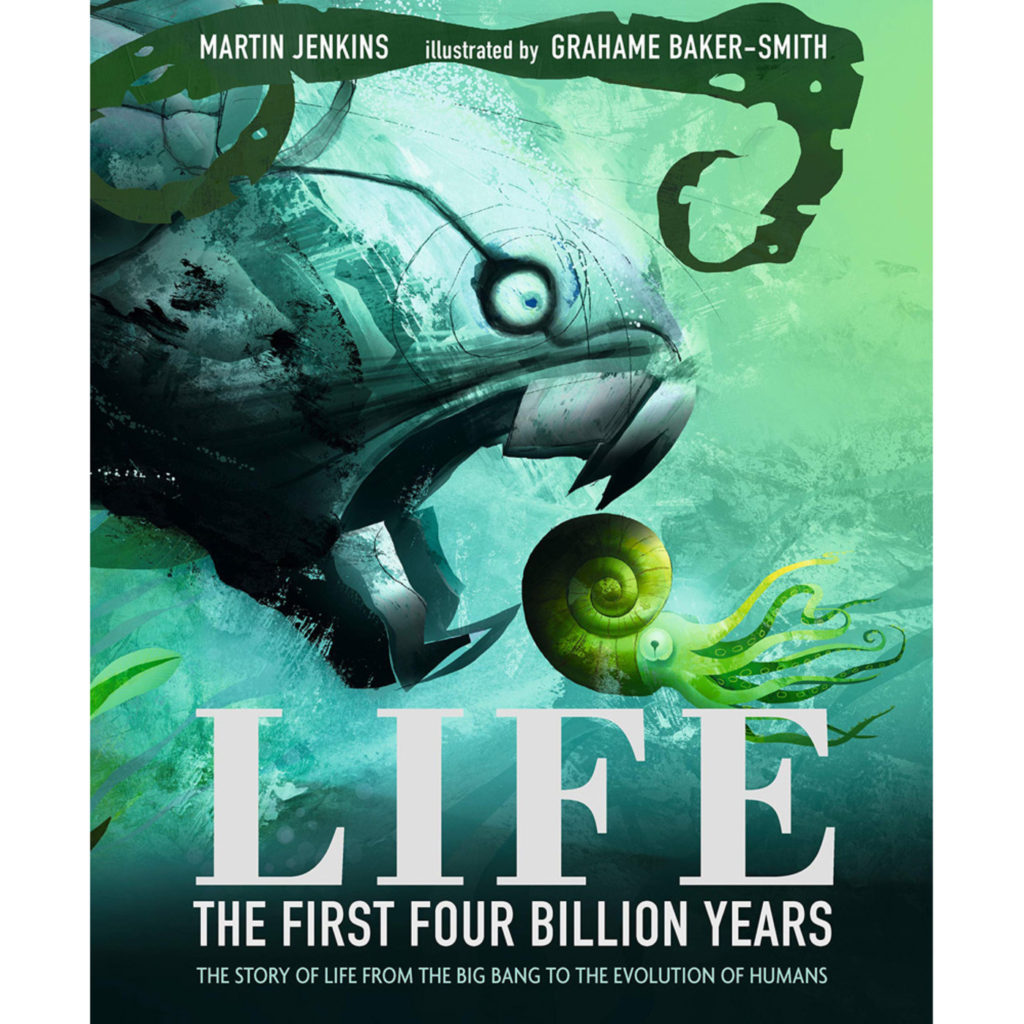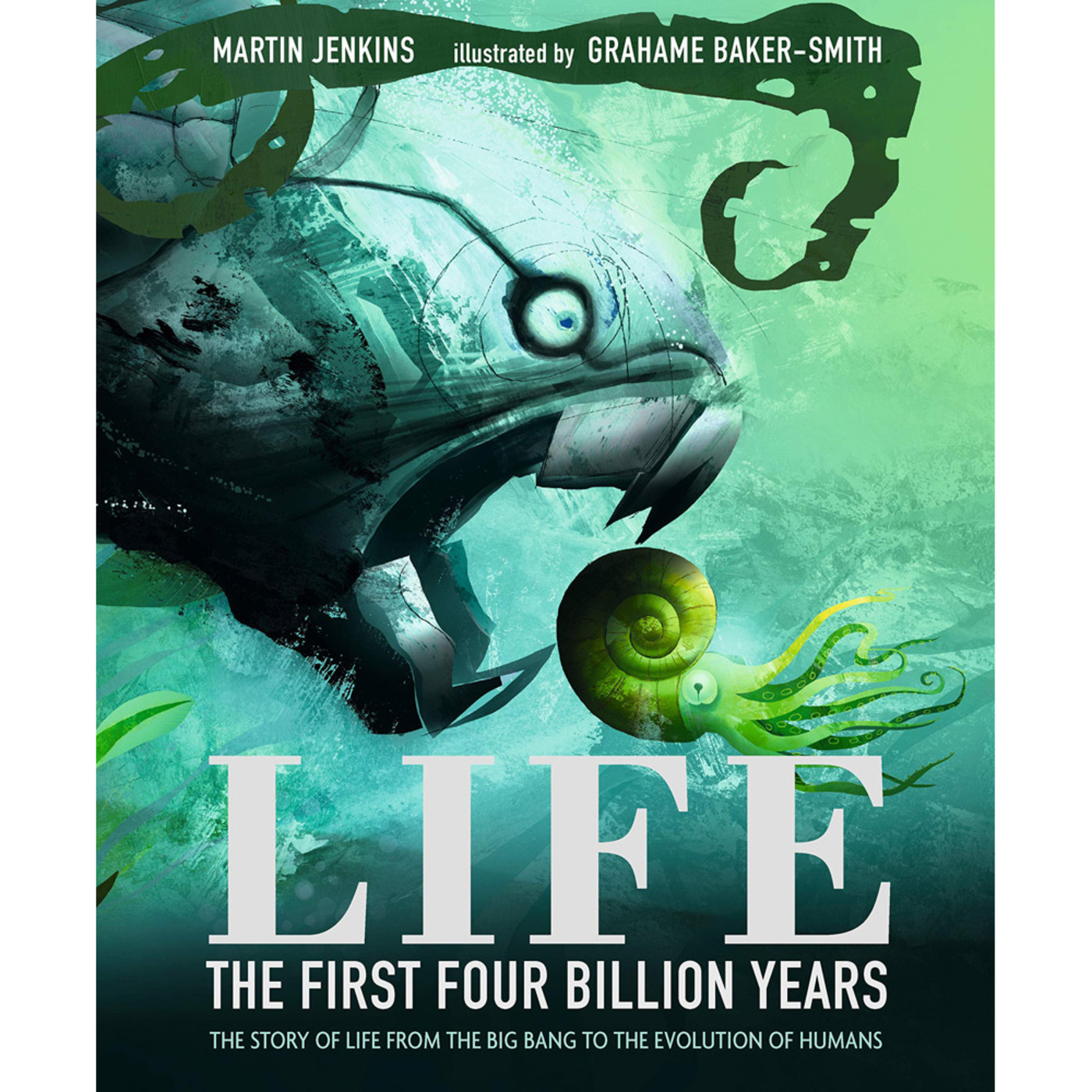It takes a certain degree of gravitas and chutzpa to title a book Life, The First Four Billion Years and only have the book be 80 pages. A title like that implies that the book would be encyclopedia-esque, covering many volumes. This book doubles down on its confidence and is an oversized book that’s worthy of being on your coffee table, if you have one. Thankfully, Life delivers in its content and illustrations in a way that we’ve seen very few books accomplish. It covers incredibly complex material in a way that can be understood by those students in upper elementary who are interested in life.

The subtitle for the book is The Story of Life From The Big Bang to The Evolution of Humans, obviously that’s a massive amount of content. It begins, as life did, with the sun and its arrival about nine billion years ago. This introduction is done and two-page gatefold that shows the vastness of space in all its darkness, opening up and covering the first seven billion years. Next up is the early Proterozoic, which was about two and a half billion years ago. This was also the first ice age which helped trigger the Oxygen that’s in our atmosphere now. Thank you very much for that happening.
As readers turn the massive pages they’ll be amazed at how the art surround them. It’s not just that the illustrations are large; it’s that they’re beautiful. Some of them are presented in black and white pencil drawings while other pages are lush, colorful scenes of jungles, oceans or monsters.
I say monsters, but in reality they are just the precursors to what advanced life became. The Eokinorhynchus is a cruel looking thing that has barbs on its body and one obvious orifice that looks like a mouth with dozens of teeth around it. Thankfully this fella lived on the floor of the ocean in the Cambrian period and was only .3 centimeters long.
The animals get bigger, like the Dunkleosteus, who can be seen on the cover of the book. This monster was 20-feet long and had a couple of jagged teeth. The animals also get out of the ocean. You’ll discover terapods, insects, see when and how Pangaea moved around, the age of dinosaurs and more. Anything that starts has to end and we see the black rock racing towards Earth about 66 million years ago that killed most living things.
Life mixes up the art and education so fabulously that kids who like reading about nature, animals or dinosaurs will find themselves spending lots of time in the book. Some of the text might be a bit advanced for elementary age readers, but they will love looking at the illustrations. Readers will also appreciated the respect that book pays to them. The book could easily have been aimed at higher level readers because it doesn’t water down the technical terms. However, the way that Life is laid out it allows those younger readers to read a couple of pages at a time, about certain ages of animals, look at the art and take a break.
For a book that’s this big it’s priced excellently at $24.99. This is education, disguised as an art book, or vice versa. It’s at home in a child’s room, in the living room, in a library or anyplace people want to learn or simply look at jaw dropping creatures from our past. Life is written by Martin Jenkins and is illustrated by Grahame Baker-Smith.





 Facebook
Facebook Twitter
Twitter Flickr
Flickr GooglePlus
GooglePlus Youtube
Youtube